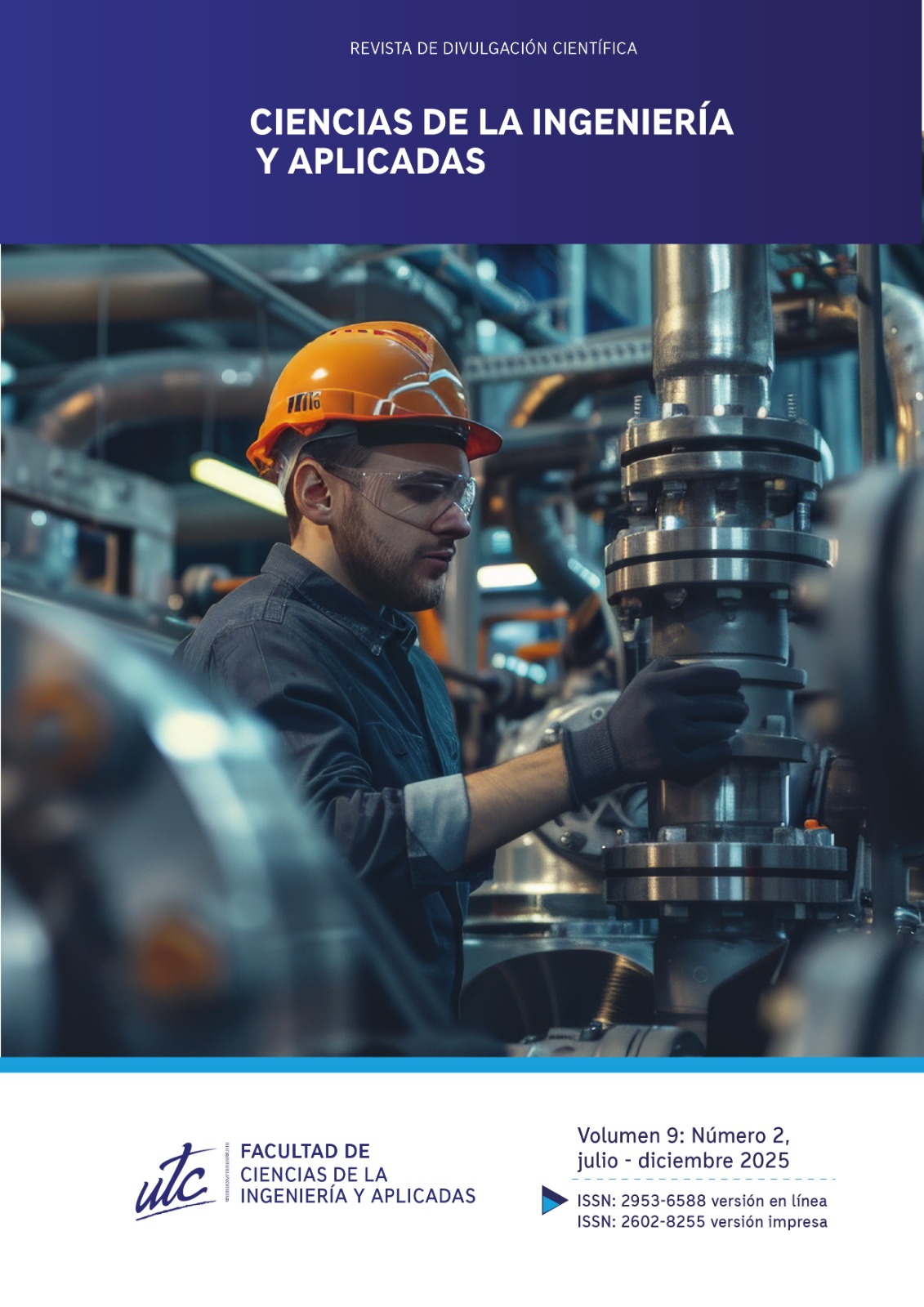Simulation and mathematical modeling of a 4-degree-of-freedom robotic ARM
Abstract
The following article shows in detail the development of the modeling process of a manipulator of a robotic arm corresponding to four degrees of freedom (4GL) this study was based on direct kinematics for the calculation and accuracy of the position of the end effector based on their joint directions. It starts from a particular position and its location in the plane is observed. The use of the method was done because it is important to identify the movement of the robot. The simulation was performed using Matlab software, in this program it was possible to illustrate the movement of the robot and how it correctly reaches the movement in the direction of a previously defined trajectory. Additionally, a test was implemented that helped to verify that the robot was able to position itself at the desired end point and that the errors generated were minimal. The results showed that the control system reached a steady behavior, and that the tracking error was reduced to converge to zero, demonstrating an efficient and precise movement, which occurred in a time of approximately 8 seconds, which evidences an adequate stability and an effective design of the control system. The stability of the movement was also evaluated by applying the Lyapunov criterion, which provides a theoretical confirmation of the reliability of the control system used. In summary, the results show that the robotic arm is capable of performing complex trajectories while maintaining a stable motion.
Downloads
References
Pazmiño, L., Echeverría, D., & Cepeda, J. (2018). Análisis de transitorios electromagnéticos en el Sistema Nacional Interconectado (S.N.I.) a nivel de 230 kV y 500 kV usando el simulador digital en tiempo real HYPERsim. Revista Técnica Energía, 15(1). https://doi.org/10.37116/revistaenergia.v15.n1.2018.319
J. Medina Cervantes, R. Villafuerte Díaz, and E. Mejía Sánchez, "3D simulator for a 4-degree-of-freedom robotic arm," Revista Iberoamericana para la Investigación y el Desarrollo Educativo, no. 12, pp. 1-14, 2014.
Plasencia, A., Freire, L. O., Quinatoa, C., & Castillo, J. (2024). Optimization of Power System Operation Using Battery Energy Storage Systems. En Lecture notes in networks and systems (pp. 496-510). https://doi.org/10.1007/978-3-031-68653-5_47
A. Monje and S. Dormido, Industrial Automation and Robotics, Madrid, Spain: UNED, 2011.
A. Monje and S. Dormido, Automática y Robótica Industrial, Madrid, Spain: UNED, 2011.
Mercado, L. D. M., Bolívar, L. M., & Mckinley, J. R. (2017). Cinemática de velocidad y aceleración del robot serial Mitsubishi Movemaster RV-M1. Entre Ciencia E Ingeniería, 11(22), 84-94. https://doi.org/10.31908/19098367.3552
J. N. Castillo, G. G. Carrillo, L. O. Freire, and J. Culqui, "Fusion data management and modeling techniques in power quality compensation using SAPF," Fusion: Practice and Applications, vol. 16, no. 2, pp. 8-21, 2024.
Felipe, L. A. L. (2011, 9 mayo). Modelación y simulación dinámica de un brazo robótico de 4 grados de libertad para tareas sobre un plano horizontal. https://repositorio.pucp.edu.pe/items/2b0ffdbc-a70e-4b54-8ed9-796a0f3739a8
Humberto, G. T. A. (2021, 27 julio). Simulación en el entorno Simulink de Matlab de un brazo robótico de 4 grados de libertad (GDL). https://bibdigital.epn.edu.ec/handle/15000/21750
AcostaR., ArgüelloD., RobalinoR., y MarreroS., «Caracterización de los motores paso a paso y su aplicación», CIYA, vol. 5, n.º 2, pp. 99-113, ago. 2021.
Husnain, S., & Abdulkader, R. (2023). Fractional Order Modeling and Control of an Articulated Robotic Arm. Engineering Technology & Applied Science Research, 13(6), 12026-12032. https://doi.org/10.48084/etasr.6270
Iqbal, J. (2019). Modern Control Laws for an Articulated Robotic Arm: Modeling and Simulation. Engineering Technology & Applied Science Research, 9(2), 4057-4061. https://doi.org/10.48084/etasr.2598
Copyright (c) 2025 Ciencias de la Ingeniería y Aplicadas

This work is licensed under a Creative Commons Attribution-NonCommercial-NoDerivatives 4.0 International License.
The authors who publish in this journal agree to the following terms:
- Creative Commons Attribution-NonCommercial-NoDerivatives License allows others to share the work with acknowledgment of authorship of the work and initial publication in this journal.
- Authors may separately establish additional agreements for the non-exclusive distribution of the version of the work published in the journal (for example, placing it in an institutional repository or publishing it in a book), with an acknowledgment of its initial publication in this journal.
- Authors are permitted and encouraged to disseminate their work electronically (for example, in institutional repositories or on their own website) before and during the submission process, as it can lead to productive exchanges, as well as further citation. earliest and largest of published works (See The Effect of Open Access) (in English).











